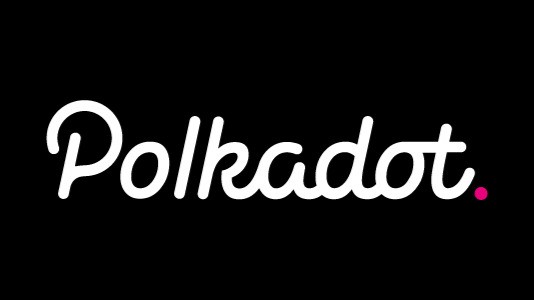You will find the following phrase on the Polkadot website: “A scalable, interoperable & secure network protocol for the next web”.
So what is the meaning of the phrase? What makes Polkadot special, and what does it want to achieve?
One of the major problems currently affecting blockchain technology is the lack of interoperability and scalability. Simply put, interoperability is the ability of different blockchains to interact and safely share data. On the other hand, Scalability refers to the ability of a blockchain network to process many transactions within a short time. A highly scalable blockchain network processes transactions faster.
Both properties are significant for real-life applications. First, scalability enables faster processing of transactions, hence attracting more users. For example, low transaction speed is one of the reasons some people may not prefer making payments with bitcoin. Sometimes, a Bitcoin transaction may take up to weeks to validate a single transaction.
The low transaction speed often happens when the network is congested. Second, interoperability allows blockchains with different functionalities to share data and perform common operations. You can think of a case of insurance service, with different agents working together to deliver the best result.
Polkadot: What is the Problem?
Blockchain and its applications exist as isolated entities. They are unable to communicate or share values.
Interoperability is important, and we have achieved it in many aspects of technology. For example, you can make a phone call or send a text message to a person using a different network. Also, you can control music in your room using your smartphone. All these cases are possible because devices and network services can communicate with each other.
However, even the networks that can communicate still suffer from a lack of scalability. They cannot support many applications or transactions at a time.
How Does Polkadot Differ?
The Polkadot network is designed to join dots with all the desperate blockchains that are currently working separately. It wants to create an internet-like environment with blockchain technology. No wonder it brands itself, “a platform for web 3”. One of the features of web 3.0 is high interoperability and scalability.
Polkadot is commonly referred to as a multi-chain network since it can join separate networks together. Consider the role of HTML in connecting sites, browsers, and servers. It allows these web applications to interact with each other. Polkadot aims at providing a basis for the Internet of blockchains. The project is introducing a platform where different blockchains can interact while secured by a common consensus algorithm.
The network also aims at taking care of the messy and costly crypto mining processes. Consequently, it will enable developers to focus on developing decentralized applications (dapps) and smart contracts.
For us to understand how Polkadot is going to solve this issue, we are going to look at the structure of the network. The Polkadot network has three main components: relay chain, parachains, and bridges.
Relay Chain
Relay chain is the main blockchain architecture that lies at the heart of the entire Polkadot ecosystem. It holds everything together. The relay chain has four main functions:
- Validating transactions – approving and recording transactions
- Reaching consensus – nomination of parties who stake their tokens for validation
- Keeping historical data
- Monitoring the overall operation of the entire Polkadot ecosystem
Polkadot does not support additional functions such as smart contracts. Therefore, it experiences a reduced workload, which ensures fast transaction processing.
Parachains
Parachains are standalone blockchain that lives on top of the relay blockchain. These blockchains specifically deal with applications and can have different application functions. They are similar to other blockchain networks such as Ethereum and Bitcoin. However, Parachains does not perform the final validation; instead, it passes the blocks to the relay chain.
One of the uniqueness of Polkadot is that it can host multiple blockchains within itself. Ideally, it can host both the Bitcoin and Ethereum blockchains within itself, and make each one a Parachain. If that is the case, then Bitcoin and Ethereum blockchains can communicate with each other.
They can also pass transactions from one to another. For example, you would convert BTC to ETH without using an exchange platform. Parachain blockchains communicate through a protocol called “Cross-Chain Message Passing” (XCMP).
Parathreads
Just like Parachains, Parathreads allow the building of special-use blockchain and applications. However, the difference is that Prathreads are for one-time use, unlike Parachains, which are more permanent. Parachains are also more resource-intensive. Think of Parathreads and Parachains as Process and Thread, running in a computer’s CPU.
A process may have many threads, which share the resources of the process. Likewise, Parathreads share resources within a Parachain since they are temporarily leased spots on a Parachain. They help in testing ideas in a live environment.
Bridges
Bridges are the special components of Polkadot that allows communication between parachains and other blockchain networks. It enables the interoperability of the Polkadot network with blockchains such as Bitcoin, Ethereum, Binance Smart Chain, and Solana.
Polkadot also provides a library of templates that enable developers to create applications within hours.
What is the DOT Token?
The Polkadot network system is powered by the native token (DOT). It has many functions within the network.
The DOT token is a Staking Coin
The token is helping in securing the network through staking. Unlike other that uses the proof-of-work consensus mechanism, Polkadot uses the proof-of-stake (PoS) consensus mechanism. Proof-of-work (PoW), involves using powerful computers to solve mathematical problems to get a chance to confirm the transaction. It is a resource-intensive mechanism.
Staking, on the other hand, requires validators to lock their crypto assets and get a chance to validate transactions. It is faster and less resource-intensive compared to PoW.
The DOT token is a Governance Token
DOT token holders have the power to contribute to issues governance of the blockchain. They can suggest changes and vote on changes that would improve the network’s operation and growth.
The DOT tokens as a Bonding Token
Introducing new bonded tokens creates parachains to the network while removing bonded tokens eliminates outdated or non-useful parachains. It is a form of proof-of-stake powered by the DOT tokens. The DOT token also serves as a currency.
Polkadot: Final Thought
Blockchain technology is still developing. New networks target solving some of the challenges facing the initial blockchain networks such as Bitcoin and Ethereum.
In building Polkadot, the developers paid close attention to providing solutions to the problems facing the previous blockchains systems. It provides the solution to the lack of customizability affecting blockchains such as Bitcoin. It also solves the scalability problem, which affects Ethereum 1.0 and other blockchains running on smart contacts.
Comparing the visions of Ethereum 2.0 and Polkadot, it is no coincidence that the same developers are responsible for both projects.
Will Polkadot finally create a perfect internet of blockchain? Only time will tell, but the developers are rising to the challenge.









